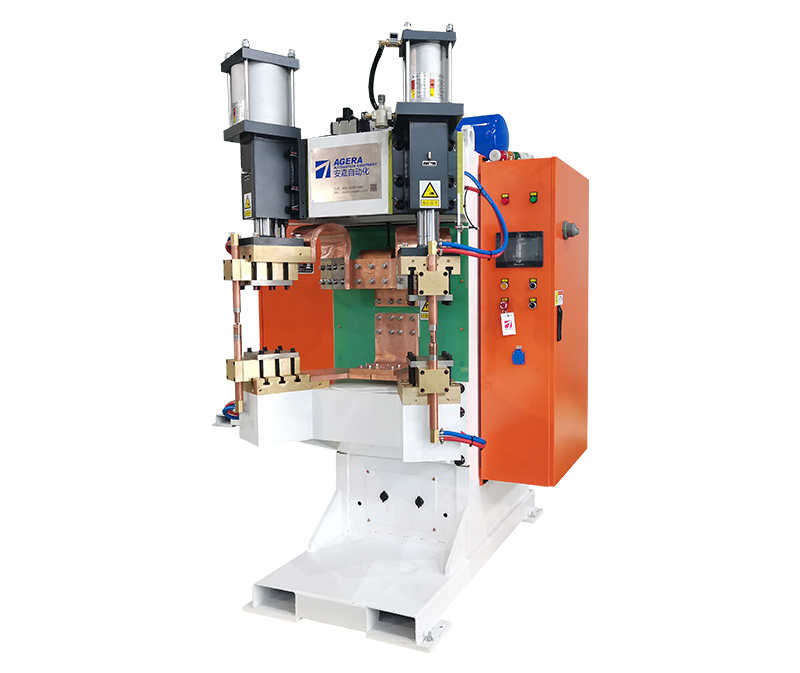Formation Process of Weld Spots in Nut Spot Welding Machines
In the realm of nut spot welding machines, the formation of weld spots is a crucial process that determines the strength and reliability of the joint. Understanding the intricacies of this formation process is essential for achieving high-quality welds in various applications. This article delves into the step-by-step procedure of how weld spots are formed in nut spot welding machines.
- Surface Preparation: Before initiating the welding process, the surfaces of the workpieces and nuts must be thoroughly cleaned to remove any contaminants or oxide layers. This ensures optimal metal-to-metal contact, which is vital for achieving a strong and durable weld joint.
- Electrode Contact: As the nut spot welding machine activates, the electrodes make contact with the workpiece and nut. The application of pressure enables the establishment of an electrical connection and initiates the flow of welding current.
- Joule Heating: The flow of welding current through the electrode and workpiece generates Joule heating at the point of contact. This results in localized melting of the metal at the interface, creating a molten weld pool.
- Heat Distribution: During the welding process, heat distribution plays a crucial role in controlling the size and depth of the weld spot. Proper heat distribution ensures that the molten metal penetrates the workpieces and nut effectively, forming a strong metallurgical bond.
- Solidification: As the welding current ceases, the molten metal rapidly cools and solidifies, fusing the workpiece and nut together. The solidification process influences the mechanical properties of the weld spot, including its strength and hardness.
- Annealing Effect: In some cases, the weld spot may undergo an annealing effect, where the heat-affected zone experiences controlled cooling to relieve residual stresses and improve the joint’s ductility.
- Quality Inspection: After the welding process, the weld spots are subject to rigorous quality inspection to ensure compliance with desired specifications and standards. Various non-destructive testing techniques may be employed to assess the weld integrity.
The formation process of weld spots in nut spot welding machines is a dynamic interplay of electrical current, heat generation, and metallurgical fusion. Through meticulous surface preparation, precise application of welding current, and proper heat distribution, high-quality weld spots are achieved, contributing to the overall strength and performance of welded joints. Understanding and optimizing this formation process is paramount for ensuring the reliability and longevity of welded components in various industrial applications.
